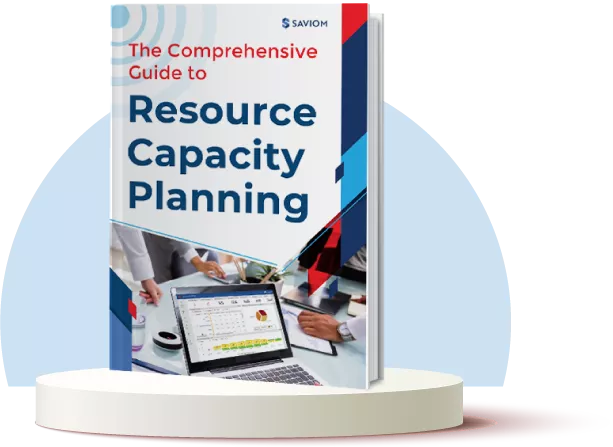Imagine a mid-sized manufacturing firm struggling to keep up with the increasing client demand. The production line experiences frequent delays due to issues such as inventory levels being too low, recurring supply chain bottlenecks, and inefficient processes. Moreover, the firm is overworking its employees to meet rising demand; however, it ends up stagnating productivity levels.
This scenario isn’t uncommon in businesses striving to scale their operations and capture new markets. It highlights the pressing need to improve operational efficiency. By optimizing processes, people, and products, businesses can effectively streamline operations and enhance output. As a result, it enables firms to deliver products/services to end users faster and cost-effectively, thereby improving profitability.
In this blog, you will understand the best strategies managers can implement to improve operational efficiency in your firm.
But before that, let’s go through the signs you need to look for to improve operational efficiency in your firm.
Signs That You Need to Improve Operational Efficiency
According to WorldMetrics,”98% of companies report that, on average, their most valuable projects exceed budget and timeline by 189% and 178%, respectively, due to operational inefficiencies.”
This alarming statistic highlights the critical need for firms to recognize and address the signs of operational inefficiency to prevent costly overruns and delays.
Let’s go through them in detail.
Poor Project Outcomes
Poor project outcomes such as frequent project delays, budget escalations, and failure to meet client expectations are clear indicators of operational inefficiency. These issues often stem from:
- Inefficient planning
- Inadequate resource allocation
- Ineffective collaboration
- Poor execution
Such inefficiencies hamper project execution and delivery, adversely affecting client satisfaction and the firm’s reputation. Over time, it can lead to missed business opportunities and subpar financial performance.
Read more: What is Project Resource Management and How to Master it?
Surge in Operational Costs
A noticeable increase in operational costs, without corresponding improvements in output or quality, signals operational inefficiencies. These costs can arise from:
- Overstaffing leading to higher labor cost
- Increase in utility bills
- Higher inventory holding cost
- Outdated equipment and tools
This surge can inflate production or project costs and strain financial resources. Therefore, it reduces the firm’s overall profitability and return on investment (ROI).
Low Employee Productivity & Engagement
Decreased productivity, lack of motivation, frequent absenteeism, disengagement among employees, and low participation in team activities are indicative of operational inefficiencies. Factors contributing to this include:
- Unclear roles and responsibilities
- Inadequate training and upskilling
- Over/underutilization of resources
- Ineffective management practices
- Poor workplace culture
These issues can compromise project quality, resulting in budget and schedule overruns. Subsequently, it can adversely affect the financial health of the organization.
Inefficient Processes & High Waste Levels
When you see continuous duplicate data entry, excessive scrap in manufacturing, or unnecessary administrative tasks, it’s a glaring indication of operational inefficiency. These issues arise due to:
- Inefficient processes
- Overproduction
- Unnecessary activities or movement of people
- Absence of documentation and standardization
- Poor quality controls
- Lack of automation
It can lead to increased costs and slower response times, undermining overall operational effectiveness and business efficiency.
Information Silos & Communication Gaps
If you find teams engaged in redundant tasks and experiencing frequent internal conflicts, these are clear signs of inefficient operational efficiency. These situations arise from:
- Inefficient coordination
- Miscommunication within teams
- Data silos
The absence of consolidated efforts and collaboration culminates in sub-optimal productivity, increased human errors, and an unconducive work environment.
Now, having identified the indicators of inefficient operational processes, it’s crucial to grasp the importance of enhancing operational efficiency.
Why is it Critical to Improve Operational Efficiency for Businesses?
It’s paramount for businesses to increase operational efficiency to stay afloat in a hypercompetitive market. A well-rounded operational strategy can help organizations boost their profit margins many folds.
First, operational efficiency minimizes waste by optimizing internal processes as well as the allocation of human and non-human resources. It helps companies to avoid inventory shortages and excesses, thereby reducing expenditure. This cost-saving aspect is vital for maintaining profitability, especially in industries where margins are tight.
Secondly, efficient operations equate to faster production and delivery times as processes are automated, streamlined, and less prone to errors. It also enables firms to implement necessary quality controls to improve the final product or service. These improvements unequivocally elevate customer experience, giving businesses a significant competitive edge.
Beyond financial benefits, improving operational efficiency also contributes to better employee satisfaction and engagement. It eliminates redundant and time-consuming tasks, allowing companies to redirect resources to more meaningful, value-driven work. Thus, it reduces the risk of disengagement and burnout while fostering a conducive work environment.
Lastly, companies with higher operational efficiency tend to be more agile and responsive to changing customer and market demand. Therefore, it empowers them to enhance brand perception and maximize ROI.
Now that we are aware of the benefits of operational efficiency, let’s understand the steps that you can undertake to improve it.
How to Improve Operational Efficiency?
Establishing robust strategies to increase operational efficiency helps firms to meet their business goals – reduce costs, improve processes, and maximize revenue.
Prioritize Projects & Establish SMART Goals
To achieve greater operational efficiency, it’s crucial to prioritize projects. Organizations can start by ranking projects based on potential financial impact and feasibility. Then, they set SMART goals for each priority project. This enables companies to focus on high-impact initiatives and develop realistic targets. Moreover, having a well-defined project roadmap allows firms to trim down waste and maximize ROI.
Optimize and Empower Resources
Organizations must focus on optimizing the allocation and utilization of resources (human and non-human) to boost productivity and efficiency. They must also invest in training and development programs to empower and equip the workforce with emerging skills and competencies. This will help companies build an adept talent pool that’s capable of taking on multi-faceted projects and meeting strategic objectives.
Read more: How Can Retraining/Upskilling Future-Proof Your Workforce?
Use Tools and Technology to Automate Processes
Investing in proper tools and technology can help businesses automate repetitive, time-consuming processes such as data entry, inventory management, and customer support. This helps reduce manual intervention, minimize human errors, and accelerate workflow cycles. As a result, it saves resource time and costs as well as speeds up the delivery process.
Implement Lean Principles to Eliminate Wastage
One of the primary objectives of improving operational efficiency is to reduce waste, and lean principles play a crucial role in achieving it. Methodologies such as Kaizen and Just-in-Time help companies identify and eliminate non-value-added activities within organizational processes. It enables them to avoid overproduction, excess inventory, unnecessary movement, and waiting time. Thus, lean principles enable companies to focus on quality improvements, efficiency, and customer satisfaction.
Develop a Robust Financial Strategy
A robust financial strategy allows organizations to maintain optimum levels of operational efficiency. It gives them elbow room to make necessary investments in physical/digital infrastructure, product innovation, and research & development. These incentives help companies to improve the end product, boost revenue, and stay competitive in the market.
Foster Effective Communication and Collaboration
Since a company’s entire operations depend on different teams working together efficiently, it’s important to foster a culture of effective communication and collaboration. Clear and open communication facilitates a seamless exchange of information, ideas, and feedback. It reduces misunderstandings that can cause process delays. Conversely, cross-functional collaboration helps organizations to accomplish more work with fewer resources, thereby enhancing operational efficiency.
Eliminate Information Silos for Improved Decision-Making
Organizations must break down information silos to establish a single source of truth. This centralized visibility empowers stakeholders to promptly identify bottlenecks and implement corrective strategies to ensure smooth operations. Further, a holistic view of daily functions and easy access to critical data enables companies to make data-driven decisions and achieve operational excellence.
Read more: 7 Reasons Why You Shouldn’t Use Excel for Resource Planning
Compare and Improve Performance Metrics
Companies must set performance metrics and regularly compare them against industry standards or past benchmarks to gauge progress and identify areas of improvement. Such continuous improvement based on data-driven insights allows organizations to adapt swiftly to market changes, optimize processes, and enhance operational efficiency.
Wrapping Up
Improving operational efficiency is essential for the growth and sustainability of any business. By recognizing the signs of inefficiency and implementing targeted strategies as mentioned above, firms can enhance productivity, reduce costs, and drive long-term success, increasing profitability.
So, are you ready to improve your firm’s operational efficiency?
Glossary
Read More: Glossary of Resource Workforce Planning, Scheduling and Management
SAVIOM Solution
SAVIOM is the market leader in offering the most powerful and configurable solution for managing your enterprise resources effectively and efficiently. With over 20 years of experience, this Australian-based MNC has created its global presence across 50 countries and helped more than 100 customers achieve their business goals. SAVIOM also has highly customizable products for project portfolio management, professional service automation, and workforce planning software based on business requirements.










